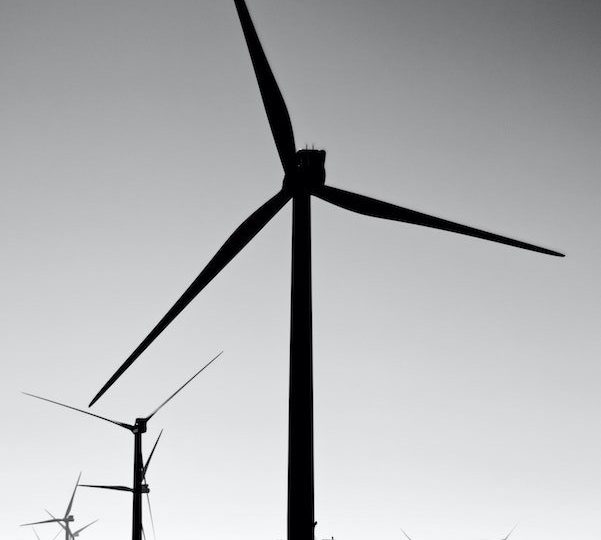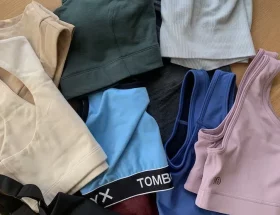US citizens emit more greenhouse gases than any other large country—according to the EPA, in recent years, US greenhouse gas emissions totaled 5,222 million metric tons of carbon dioxide annually. With a population of just over 330 million people, that means there are about 16 metric tons emitted per person in the US.
We bring our reusable cups, buy items with the least amount of plastic packaging, and carpool when possible. But sometimes, these actions can feel like droplets in the rising wave of collective consumer change. One estimate in the book Doing Good Better shows that even if we stopped using plastic bags entirely, we’d only cut out 100 kilograms of carbon dioxide a year—or 0.4 percent of our total emissions. Other times, the efforts made towards reducing our carbon impact can feel disheartening, especially when we read news headlines about the Amazon rainforest burning to the ground.
“Even if we stopped using plastic bags entirely, we’d only cut out 100 kilograms of carbon dioxide a year—or 0.4 percent of our total emissions.”
Yes, a lot of change must come from corporations and governments. However, when the Amazon is on fire, and climate change is drastically impacting rural farmers and city dwellers alike, we have to ask: are there not more effective ways to create a greener world?
Recently, carbon offsetting—the practice of compensating for greenhouse gas emissions in one area by reducing emissions elsewhere—has become a climate change mitigation tactic gaining popularity among conscious consumers. In addition to homegrown efforts to reduce CO2, carbon offsetting offers an enticing opportunity to pay for projects in conservation, reforestation, or renewable energy. Plainly put, it’s investing in long-term efforts to combat climate change. For example, by purchasing offsets, individuals can provide economic assistance to local indigenous groups in Brazil so they don’t resort to clearing Amazonian land. A host of projects can also include planting trees, contributing to a growing wind farm, or investing in carbon capture research and development.
So how exactly does carbon offsetting work—and is it an impactful way to mitigate climate change?
The Case For Carbon Offsetting
While critics of carbon offsetting say that it is an overly-simplistic way to count the carbon costs, there is solid research that shows buying carbon offsets can have dramatic implications for ecological protection, restoration, and combating climate change in places where conservation work isn’t already happening.
“There is too much at stake not to offset our emissions through productive alternatives.”
Because of the catastrophic implications of climate change, there is too much at stake not to offset our emissions through productive alternatives. Economists estimate that a two-degree Celsius rise in average global temperature would cause the loss of countless lives due to extreme heat and the extinction of up to 20 percent of certain species. A 2019 study by the National Bureau of Economic Research even estimated that the U.S. could see a decline of GDP by 2.5% by 2050, if no major changes are implemented.
Oxford researcher and a leader of the effective altruism movement, William MacAskill, makes a case for carbon offsetting by showing the compound impact it could have on our climate. In the example of the Amazon, certain groups like Cool Earth claim that it costs them about $100 to prevent an acre of rainforest (containing 260 metric tons of carbon dioxide) from being cut down. With a host of supporters funding their work, Cool Earth does this indirectly by helping local communities in places like Peru and the Democratic Republic of Congo to establish more profitable ventures than selling trees or clearing land for cattle. Instead, the organization works with locals to secure property rights, improve community infrastructure, and connects them to markets where they can sell their goods and services at fair prices. By shifting economies away from natural resources, carbon offsetting can strategically protect key areas or borders of the rainforest to create a “wall” of trees that blocks off a much wider landscape from illegal logging.
The nonprofit Giving What We Can estimates the average American adult needs to spend $105 a year to offset all their carbon emissions. While $100 isn’t just pocket change, for most people, it’s considerably less than it would cost to make significant changes in lifestyle, such as to stop driving or traveling altogether.
Addressing The Critics
Reducing your carbon footprint by using offsets in effective ways ultimately comes down to knowing how to choose the right organizations and initiatives. The following are some critiques of carbon offsetting that should propel conscious consumers to do informed research. Let’s consider and address a few of them here:
1. REDUCTIONS IN CARBON-OFFSETTING PROJECTS WOULD HAVE HAPPENED ANYWAY
This principle of “additionality” means that it’s essential to evaluate if a project wouldn’t have existed without the extra funding from the selling of offsets. Since the point of buying carbon offsets is to create a net benefit for the climate, it’s important to make sure offsets are contributing to innovative initiatives. Trusted organizations, for example, should show that people in Mexico would not have decided to capture methane from pig farms, without the funds from offsets.
2. IT’S DIFFICULT TO KNOW HOW FAST AN OFFSET CAN REMOVE THAT QUANTITY OF CARBON FROM THE ATMOSPHERE
While this is true, different types of projects reduce carbon at different rates. The David Suzuki Foundation argues that some offsets are better than others—for example, while tree-planting projects in arid places have measurable rates of carbon reduction, they do not address our society’s dependence on fossil fuels. As it is with emerging fields, sometimes you have to play the long game in funding research and development, which will have a delayed payoff. Hundreds of millions of dollars have gone to cancer research, for example, but a breakthrough cure would be just as impactful as a breakthrough for climate change.
Even if you don’t know the hard numbers behind carbon offsetting, you can still support sustainability projects (with proven impact records) to mitigate the detriments of climate change. Just don’t think of it as a trade-off for your own footprint!
3. OFFSETTING SENDS A NEGATIVE CULTURAL MESSAGE THAT YOU CAN USE MONEY TO MAKE YOUR CARBON EMISSIONS DISAPPEAR
Organizations like Cool Effect help travelers calculate the carbon emissions from trips to offset greenhouse gases emitted during flights, and California’s been running its own successful cap-and-trade offsetting program for a few years now. But programs like these have been criticized as forms of “privileged pollution.”
Even high-profile figures like Prince Harry and Meghan Markle, despite their advocacy of eco-friendly practices, have been criticized for their extensive private jet travel (and subsequent offsetting) as they fly. Carbon offsetting should not empower us to live a more carbon-careless life, but rather be paired with daily efforts and used as an add-on strategy to reach a net-zero carbon world. (In an aptly-timed response shortly after the heat around their travel, the royal couple announced the launch of their new sustainable travel company, Travalyst.)
The Bottom Line
Carbon offsetting has tremendous potential to do good, especially as research continues to emerge. To start, here are more ways you can learn about your carbon footprint and take action:
-
Calculate your carbon footprint with the World Wildlife Foundation’s calculator, which will give you suggestions on how to reduce it through your travel, home, food, and lifestyle.
-
Donate to ongoing projects through accredited, well-respected organizations like Cool Earth, Gold Standard, Coalition for Rainforest Nations, The Clean Air Task Force, Mangrove Action Project, and COTAP.
-
Continue protecting the environment by using less plastic, eating less meat, taking public transportation, recycling, and wearing slow fashion.
What are your thoughts on carbon offsetting—have you done it, and what have you learned?
Alice Zhang is a California-grown writer thinking on the things shaping urban living, the modern woman, and living a conscious life of impact in light of a bigger world. A graduate of Northwestern University’s j-school, she spent time abroad working with a microfinance project in Peru before transitioning into a 9-5 in the global development sector. Follow her latest creative endeavors and musings on Instagram at @alice.zhng.
















